Saturday, February 23, 2008
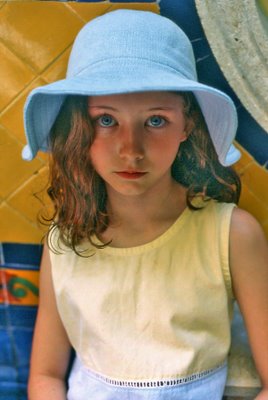 Three hundred and sixty four days ago I wrote Why do I blog? A Northern Voice Perspective. I checked what I wrote (you can see all of it below) and the only few changes that I can notice is that I replaced my venerable Epson 1640 SU with an Epson V-700. And I also note that Rebecca is getting some competition from her sister Lauren in my blogs.  Paradoxically in the middle of having great FUN at this year's Northern Voice I have strained both Friday night and tonight in finding inspiration or motive to write the blog. Perhaps writing it in the evening when Rosemary is asleep is a private and even pleasantly lonely activity. Listening to a few read their blogs (some quite personal about failed relationships) at the Tiki Party, Thursday night, put me on the other end (receiving?) of my own blog. Pressing the Publish Post box sends my day's blog into an Einsteinian ether. That's comforting. Hearing it (a blog) bounce back as I did at the Waldorf was excruciating. I wonder if I will be back to normal by Sunday night? The little girl, my granddaughter Rebecca, who illustrated this blog a year ago (picture taken in Uruguay in 2004) is is now 10 and I include here some pictures of her wearing that same dress we bought in Punta del Este, Uruguay in 2004. 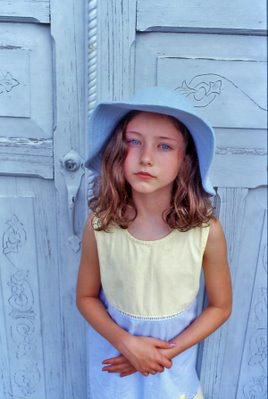 I listened with interest the motivations of people who send pictures, tips and news essays to the CBC's Your Story in the Unconference. It would seem that they seek fame through that elusive medium of being published and "not paid be damned." It is quite difficult to borrow money from the bank with photo credits. It all made me think of Rebecca and a question she asked me as we left Opera Sushi, some weeks back. The Japanese chef had said, "Goodbye Rebecca," even though we were never introduced. It was obvious that the chef had read my blog about his establishment. Rebecca asked me, "Am I famous?" I told her I didn't think so. I further added, "You have to do something with your life before you can perhaps be famous." WHY DO I BLOG? A NORTHERN PERSPECTIVE Saturday, February 24, 2007 1979 motto of the Vancouver alternative scene rock band The Modernettes.Get Modern or get fucked. year and one month ago I started this blog with complete ignorance on what a blog was. The blog was attached to a simultaneously new web page, both designed by Doug Jasinki and Chris Botting at Skunkworks Creative Group Ltd.. That Doug Jasinski is also a lawyer brought with it some extra advantages in the wording of my profile. Without knowing that it was a primitive version of a blog/wiki I had been a member some years before of the American Hosta Society Electronic Round Robin. It was the furious flaming in the forum postings that convinced me that my new blog should be what I call a "one sided" blog. I was unsure on what the content of my blog was to be until I noticed my attraction to Bill Richardsons's CBC Radio show Bunny Watson. Alas! This radio program has been discontinued, but my memory of the program's quirky bringing together of apparently random facts through association has been my inspiration for my blog since. It is because of my blog's randomness that I have resisted classifying it into categories. My new blog went along for a few weeks and was somehow noticed by Tim Bray who immediately advised me on two very necessary features. One was the RSS feed and the other the individual address links to every day's postings. I asked Bray what an RSS feed was and he told me, "Don't ask me, just tell your folks to install it." Looking into other blogs also convinced me on a self-imposed structure of: 1. No ranting. 2. No politics. 3. No religion. 4. No reviews of contemporary films. 5. No nude photographs. (I broke this rule once) 6. No blogs related to the day's news events except the deaths of interesting people whose pictures I have in my files. 7. No profanity except as quotes today and hereA large chunk of my blog has to do with my relationship to my granddaughter Rebecca Stewart (now 9). Slowly her sister Lauren (4) is beginning to share blog time. Rebecca is not the only frequent visitor of my blog. My two daughters have told me that they have been afraid to ask me questions about my past or that there simply never seemed to be the time for them. They enjoy finding about themselves through my recounting of our past as a family. I have been a freelance writer for 15 years and being able to write for Vancouver publications has all but disappeared. The incresing trend in using handout photographs (the same ones appear in most magazines and newspapers) has been paralleled by one of "modified" press releases made to look editorial. As newpsapers find it hard to increase their ad space there are many cuts in feelance hiring. For a while I was angry and frustrated. This pent up anger has been released in my blogs on music, theatre and dance. I preview favourite artists and shows. I write what I want in the format that I want. No editor tells me I have to cut my word count. With this pent up anger gone my spirits are up and I can seek work calmly in the difficult market of photography. My Epson 1640 SU flatbed scanner sits to the left of my monitor. It is a friendly companion that has served me well in my blogging. It has helped me make sense and put an order in my head of my extensive 30 year-old film files. When I don't have a photograph to fit into that day's blog I often find objects in my house that magically come to life when I place them on my scanner. My wife Rosemary was at first aprehensive on my daily disappeances to sit in front of my computer. But after several valuable sales of my photographs found by search engines in my blog, including a recent one of Jane Jacobs to the Rockefeller Foundation she sees it as almost all good. So do I. It would seem that my horizons in the blogging world are expanding. It was only yesterday, 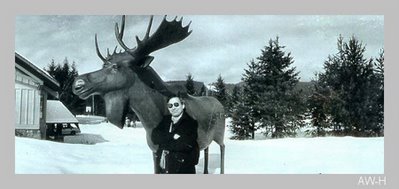 at Moosecamp that I discovered a range of stuff I was completely ignorant about. I may not understand it yet, but there it is in my head ready to find future associations. Stuff like Drupel, WordPress, Twitter and Moo Cards.
The Other Side Of Two Dimensions
This is a repeat appearance of my blog from Friday, July 06, 2007 and in a nutshell it is what my talk with Kris Krug will be about in today's 2008 Northern Voice.

Sometime in 1985 I read A.K. Dewdney's The Planiverse, a strange novel about a two-dimensional world. Whenever I run into Dewdney Trunk Road (it seems to start and stop and meander through much of the Lower Mainland) I think of the Planiverse. Just like the inhabitants of The Planiverse would never think to look up and discover the third dimension, somehow it would be just as impossible to drive the length of Dewdney Trunk Road without getting lost, or would it?
Five years ago Rosemary and I took Rebecca (then 5) to our first vacation trip together. We went to Washington DC. We saw a few paintings at the National Gallery but I left the best for last. I took Rebecca to the special room and she stared at the 16 13/16 x 14 9/16 oil on panel and said, "Papi, she looks like the Mona Lisa. This must be a painting by da Vinci." Was I really proud of her! What is not generally known about Genevra da Benci is that the painting has two sides, an obverse one.
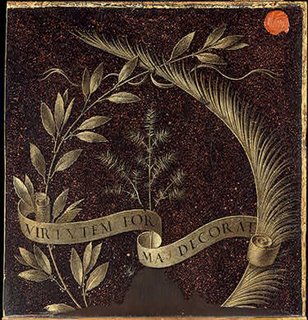
I have never tried to tell my Scottish heritage son-in-law, Bruce Stewart, my Scottish joke about the one-sided pancakes which cost less than the two-sided variety!
The "rules" of composition in photography are artificial tricks that are supposed to induce the movement of a viewer's eyes when the viewer looks at a photograph. Photographs that work will have at least one diagonal line or the horizon line will not be equidistant from top and bottom as that would create, instantaneously, two equally boring photographs. These "rules" try to overcome the limitation that a photograph compresses (supress is perhaps better here) our three dimensional reality into two.
Since so many of the professional digital cameras (DSLRs) as well as the professional film ones (SLRs) have focal plane shutters, they create photographs in which one section of the photograph (where the shutter starts) will be earlier in time than the last part of the photograph. Without going into more confusing details, few of us realize that these photographs, while supressing that third dimension, depth, do include the fourth one, time! In brief in a portrait of yourself the top of your head will be "younger" than your feet.
But I would disagree that a photograph has only two dimensions (if we eliminate time). Da Vinci's portrait at the National Gallery is a good example. A photograph, a good photograph printed on heavy art photographic paper, will have an edge and heft. Vintage photographs (printed at about the time that they were taken) by such photographers as Edward Weston or Manuel Alvarez Bravo, will be signed in pencil on the back. It might have a date and or a dealer's stamp. For me these photographs, even mine, have three dimensions. I can hold them, I can cradle them, I can tear them and fold them.
On February 24 I gave a little talk at the Northern Voice Blogging Conference at UBC. As I spoke I had that day's blog projected behind me. It featured one of my favourite photographs of Rebecca. I had also brought a hard copy (a very large, beautifully framed light jet print) and had placed it behind me. After my talk a woman (there were perhaps a couple of hundred people in the room) came up to me and said, "I don't understand why you brought that (pointing at the framed photograph), after all you had it projected behind you."
That left me shocked and speechless and I have given it much thought all these months. I have come to the conclusion that our visual world (the world of pictures we look at) is in a transition from a two (really three) dimensional world to one of a true two dimensions as seen on a monitor or flat screened TV. Not only is that happening very quickly but it is also a transition from the static layout of a photo album, a magazine or a picture book to one of images that scroll in a rapid sequence.
It would seem that the cutting edge world of web design is being forced to incorporate video. One image is not enough. So we have flash and Flash and other named versions of Flash and flash. I would argue that just as Cinemascope could not in the end compete with the ease of flicking on a TV set our web as we know it will be doomed (will it?) if it attempts to imitate TV.
At my age (64) I must attempt to be objective and not denigrate this transition. I might like to hold a photograph that might even smell of fixer (and thus not be properly washed) but that does not mean that the two-dimensional images with all that contrast and vivid colour of a computer monitor are to be deemed inferior.
Until those monitor images (in those strict two dimensions) incorporate a true third of depth (as in 3D) I will personally enjoy the heft, smell, feel and that other side of a paper photograph!
Andrea Hodge - The Essential Ballerina
Friday, February 22, 2008
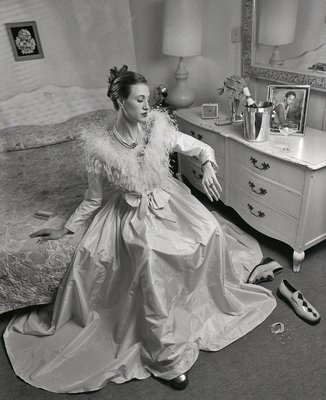
At age 65 I am late into appreciating dance. I saw the Royal Winnipeg Ballet's Evelyn Hart in 1995 and I was smitten by her and with dance. At first it was ballet. Then I expanded my taste to modern ballet. From there I progressed further into modern dance, Butoh and contact improvisational with the wonderful Susan Elliott. But I will usually pass at watching tap dancing. I may be allergic to top hats and canes.
Through my 13 years of seeing dance of which the last five I have been often occompanied by Rebecca who is now 10. Lauren, 5, has seen her fair share the last year and a half.
There are dancers of the modern kind like Alison Denham, Crystal Pite, Emily Molnar and Cori Caulfield. But there are very few that I would define as ballerinas. A ballerina for me has to be graceful but also haughty, almost patrician. And the only dancer that has ever fit that category for me in Vancouver has been Adrea Hodge whom I first saw around 1995 when she danced with Ballet BC. It was perhaps because of her and others like Simone Orlando that Rebecca finally started taking dance classes at Arts Umbrella when she was 5.
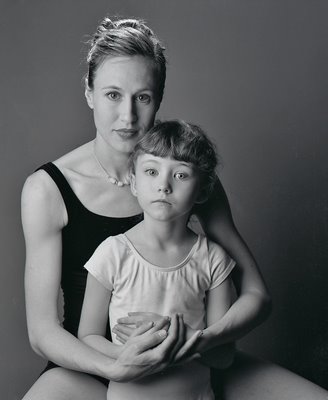
To my delight her first teacher was Andrea Hodge who had just retired from Ballet BC. Rebecca was in Andrea Hodge's first class. I asked Hodge to come to my studio to pose with Rebecca. This photograph represents a little bit of that transfer from a person to another that is one of the wonders of being human. And, who knows, perhaps some day Rebecca will be a ballerina.
Phillips Hager & North - Alas! Is No More
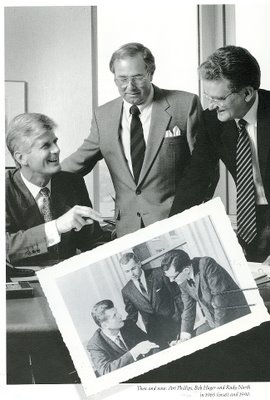 In 1990 I took the photographs for the annual report of the then already venerable Vancouver investment company, Phillips Hager & North. The folks at the design firm of Ray Torresan & Associates came up with the neat idea of taking pictures that paralleled ones taken in 1965. I had lots of fun. Here you can see (from left to right) Art Phillips, Bob Hager and Rudy North, in a scan of my copy of the report. Then (1990) I compared notes with my friend Adrian du Plessis and we came to the conclusion that Phillips Hager & North was possibly the only investment firm of our city that had never had even a hint of financial scandal. And today I read that the company has been sold to the Royal Bank. Like most good things of Vancouver memory will work wonders and soon nobody will remember the firm which will become a faceless section of a faceless bank. Alas!
Thursday, February 21, 2008

Every Christmas this snob avoids Handel's Messiah. Instead on Christmas Eve at dinner I listen to Antonio Vivaldi's Gloria RV 589. From my eldest daughter Ale to my youngest granddaughter Lauren this work is so familiar we can all hum the rousing trumpet part of the beginning.
Last year I wrote about the Pacific Baroque Orquestra and Vivaldi's Gloria RV 589 here. The salient facts are below:
On Sunday October 27, 1996 at Ryerson Church in Vancouver. A local baroque group founded in 1990, the Pacific Baroque Orchestra, played the Vivaldi Gloria in D major RV 589. The concert not only opened my ears but also my eyes. The musicians, with the exception of the cellists, the bassist and the harpsichordist, to my consternation, were all playing standing up. The big surprise was the all female Electra Women’s Chorus. I had never heard a Vivaldi Gloria with an all female chorus. The performance introduced me to red-haired sisters Caitlin (a mezzo soprano) and Phoebe MacRae (a soprano) who were featured soloists. In later years I would enjoy hearing Caitlin with Vancouver’s Musica Intima and Phoebe as a frequent soloist with the PBO and with the Modern Baroque Opera (now sadly gone).
Twelve years later (this seems to be the pattern with the Gloria) the Pacific Baroque Orchestra is again performing this work on Saturday and on Sunday. For those who are in the know the PBO will perform on Friday here. If you do go to this concert on Friday at St. James Anglican please make a monetary contribution.
While Antonio Vivaldi wrote at least 5 Glorias only two have survived. One of them is the less performed RV 588 which is a bit more complex in nature. But RV 589 is the Gloria that is the favourite, and for a very good reason. In 1970 when I purchased an Acoustic Research amplifier, turntable and the then legendary AR-3A speakers the first work that I played to test my system was the Vivaldi Gloria. Why?
I have explained to Rebecca when she sees soldiers and asks me why they are soldiers that routine and training is essential just as it is in her piano playing. Piano playing and reading music has to be second nature and automatic. Once this happens she will be able to inject passion and interpretation.
Soldiers are trained so that when they are told to charge and run towards incoming machine gun fire as they did from the trenches of WW-I they will do so without fear or flinching. Somehow this boot camp training subverts our strong instinct to preserve ourselves from potential harm.
Vivaldi's Gloria RV 589 begins with a rousing trumpet and oboe part (the oboe almost sounds like a second trumpet) with sounds so rousing that I just might jump up and run towards hundreds of bullet spewing Maxims. If that were not enough to beckon me to this concert there is the fact that the PBO has chosen Victoria's Children's Choir to sing the choral and solo parts. In a bit of extra authenticity all we need to do is to imagine that St James Anglican is Ospedalle della Pietà and the children the young musician orphans.
Calgary's Hellen Cotter will play a natural trumpet. In a phone call this morning with PBO violinist Paul Luchkow he told me, "Her trumpet has a few bends so that it will fit in a car!" The serious (I am sure he sometimes thinks about smiling) and accomplished Washington McLain will play his baroque oboe. And of course our own home-grown virtuoso, Marc Destrubé will dazzle with his violin while simultaneously directing the orchestra.
I am sad that my own Rebecca will not be able to attend. To think that she might be 20 before she has a chance to hear this work live is almost a certainty. But then I was 27 when I first heard the Gloria. She has the time. But will I be there to enjoy it with her?
Story Me A Story On Green Dolphin Street
Wednesday, February 20, 2008
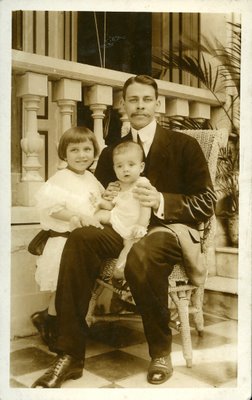 Last evening Rosemary and I sat down to watch Duel In The Sun with Gregory Peck and Joseph Cotton. My mother loved both of them so as a boy she took me to see as many films with them as she could. I have always been a sucker for Joseph Cotton in The Third Man. But the film on TCM was not Duel In The Sun but Green Dolphin Street (based on Elizabeth Goudge's novel Green Dolphin Country). I am glad of the TCM mixup. For many years I have enjoyed the jazz standard Green Dolphin Street. My favourite version is from Very Tall - Oscar Peterson Trio With Milt Jackson. I never knew or suspected until last night that the music was from the score of the 1947 film by Polish composer Bronislau Kaper. That a film, set around 1850 when the age of sail was being menaced by the age of steam and New Zealand was virgin territory, could have inspired so many jazz performers is whimsical and wonderful. The film has two gorgeous actresses, Lana Turner and Donna Reed who play sisters in a comedy of errors in which two men do not, finally, get the girl. At the end of this film Donna Reed becomes the most beautiful bride (bride of Christ)as she renounces the world to transform herself into the most beautiful nun I have ever seen anywhere. Green Dolphin Street won a Special Effects Oscar for an exciting earthquake and tidal wave scene. As Rosemary and I watched the implausible plot, with scenes on a Channel Island, a remote China, a then unknown New Zealand (possibly the redwood forest in California), a beautiful clipper ship (the Green Dolphin) and scary Maori uprisings we compared notes on how these films are not made anymore. We both enjoyed Tommy Lee Jones's The Three Burials of Melquiades Estrada but we could not see too many more films like it. Such films like garlic and sex have to be enjoyed in moderation.
Green Dolphin Street was a fairy story/adventure film. Its unreality was what made it enjoyable even though the ending is more opera than Hollywood. As adults we need stories like these as much as children do. When my uncle Tony (here with my mother and sitting on the lap of my grandfather Tirso de Irureta Goyena) used to come to visit us on weekends to fly his U-control model airplanes, in a nearby football field, he would tell his son Wency and me stories. We would plead: "Contanos un cuento." ( literally story us a story and demonstrating how beautiful Spanish can be). Uncle Tony would then tell us stories of piratas and espadachines (sworsdmen) and ladies in distress. Sometimes he would scare us with ghost stories. As I watched Lana Turner's gowns and the elaborate finger waving of her hair and many other nice details, the experience last night was no different to the fantastic stories of my uncle Tony. I have a feeling he might have inherited his story telling from Tirso.
Black, White, Gray & Goose Green
Tuesday, February 19, 2008
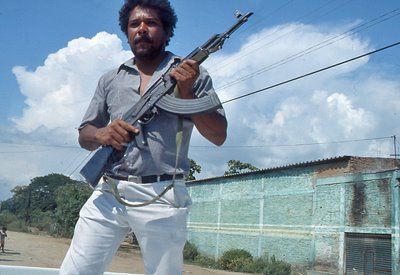
It is impossible not to look at Robert Capa's 1936 Fallen Soldier or Eddie Adams's picture of South Vietnamese Police Chief shooting the Viet Cong suspect without feeling dread, fear, mystery and repulsion. For me there is a third one, fleeting (it was a BBC videocast) but seared in my brain. When I saw it in the evening of May 27, 1982. I was watching a what looked like a serene field of gray, green and blue. it was Goose Green in las Islas Malvinas (Falkland Islands).

I saw a streak in the low clouds of an almost overcast sky. The streak was from right to left and it passed quickly but somewhere in the middle of the screen it became a white poof. It was an Argentine Airforce Skyhawk that had been shot down, probably by a missile. As in the Capa and Adams images it is the transition from existence to nonexistence that fascinates us in a macabre way. The transition between good to evil has equally fascinated me through the years.
While I have seen dead bodies in morgues and the reconstituted face of a Buenos Aires neighbour who had been run over by a train (in Argentina when I was a young boy I somehow wangled my way to go to neighbourhood wakes) I have never really been close with death except when my mother took her last breath in her bed in our home in my presence and my wife Rosemary's. I have always been fascinated with death, probably no more nor less than the average person. I purchased a coffin for my father and then for my mother but that was not quite death for me. I buried my father in a grave for only 7 years since I could not afford the perpetuity fee. Many years later a nephew of mine came back from searching for my father at the Chacarita Cemetery in Buenos Aires. He came back and threw a little white stone at me. "Y our father is long gone. There is a Mrs García where he was. This stone might have been close to his remains." He was disgusted that I had been so frugal. I was moved.
It was about the time that my father died in 1965 when my world was black or white. I argued with my friend John Sullivan. Sullivan's parents were American but he had been born in Buenos Aires so he was drafted and was serving in the Argentine army. I argued that evil was black and good was white. There was no in between. He asserted that the world was gray. It was a mixture. "There is no absolute good or absolute evil." I was sure he was wrong.
My sailor friend Felipe and I while serving in the Argentine Navy used to make fun of officers and non-commissioned officers who took their job as soldiers seriously. 'Juegan a los soldaditos.' They like to play toy soldiers.' But they seemed harmless enough and we did our best to stay out of their way. We went for errands to the Escuela De Mecánica de la Armada. This was the Navy Engineering School.
Years later it was difficult for me to reconcile that the school had become a centre of unspeakable torture and that our younger toy soldiers made people disappear. Worst of all was to find out that the hapless victims were thrown from helicopters over the River Plate and that some of these officers had first slit their victims' stomachs so that they would sink. Was the youngish Argentine Marine Corps corporal, Cabo Moraña whom we had some affection capable of such crimes? I wil never know.
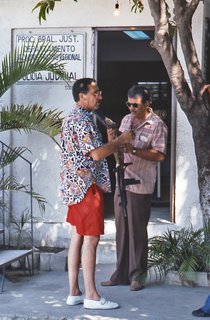
The boundary between good and evil really blurred for me in 1989 when I visited my friend the Police Chief of the Judicial Police of Acapulco. I followed and photographed every thing he did for a week. He had warned me in a most civil manner that, " I will show you everything but you have to be careful what you write about me for that magazine of yours (Vancouver Magazine).
 My job could be on the line.
My job could be on the line." He was true to his word. I saw suspects being beaten, I saw drug busts and I was particularly moved by the entrance one day of a man called Rios. He was one of the Chief's most trusted cops. He stood at attention in front of the Chief. The Chief opened his drawer and gave him a .22 caliber revolver. Rios saluted and left.
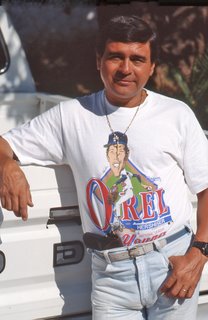 |
| Ríos |
"What's the problem?" I asked the Chief. " We have a cop killer on the loose,"he answered. The next day Rios came in and placed the gun on the Chief's desk. The Chief put the gun away and Rios saluted and left. " What happened?" I asked. The reply was concise, " We don't have a cop killer."
 |
| Betancourt |
To me the Chief's men looked no less thugs than the thugs that the Chief questioned and his staff slapped around. Betancourt,the Chief's bodyguard, who probably snuggled with with his AK-47 at night, looked like a huge and dangerous punk.
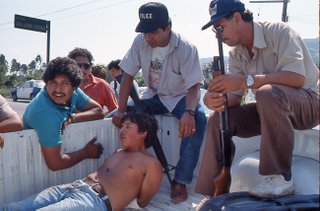
One Wednesday in the week that I was there a pretty young girl who must have been 18 came to see the chief. She mentioned that she had been raped by a young man but he had sworn to love and marry her. He had convinced the judge of this so he had been set free. She told the Chief that the young man was getting married that Saturday to someone else.
 "I want justice,
"I want justice," she said. A couple of days later we patrolled Acapulco's red light district and I spied our girl outside one of the establishments. I told the Chief, "She is a whore!" "I don't care if she is a whore. I will see justice done. I don't care if he is getting married in a church. We will be waiting. That crap about not being able to arrest someone in church is Hollywood crap."

When Saturday afternoon came the Chief
beckoned me to follow him. We went to the nearby jail and I saw a man in black suit. "There is our man. We nailed the S.O.B. just before he got married." Three days later he was freed as his family paid a "special" bail.
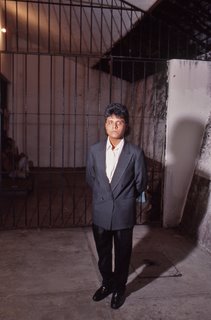
I have read of further and more serious incidents involving my friend the chief and I have mixed feelings. I don't really know what I would have done in his place. By then my blacks and whites were all muddled and I have yet to experience the violence of a near death.

The Chief is now 70 and he lives abroad. I would have never bet a peso for him surviving his job. But he survived. We chatted with Skype. I remember him singing at our neighbourhood parties in Arboledas, Mexico around 1974. His favourite singer was Tom Jones, " I look like him," he would tell us and then he would sing Little Green Apples.
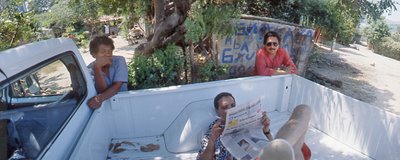
How did John Sullivan know at so early an age?
Doc Harris & Those Air Canada Flight Attendants
Monday, February 18, 2008
I come from a generation that could look at a stylized world map that would have quaint characters representing our then naive image of a country. Mexico would be represented by a Mexican sleeping siesta (face covered by a broad rimmed bandido hat) while leaning (most unrealistically) on a cactus. Germany had a man dressed in leather pants with braces and a feather hat. Argentina would have been represented by a gaucho holding boleadoras on a horse. Remote China would star a woman wearing a conical hat while planting rice.
That image has changed and many of us feel a bit disconcerted to find out that the Mexican pyramids of Teotihuacan have a nearby Wal-Mart. My generation expected beautiful and young women to greet us upon walking up the ramp (on the tarmac) of a Douglas DC-6. And we called them stewardesses.
It will soon come to pass that the Dallas Cowboys Cheerleaders will demand to stay on for years and will sue for damages if they are not kept until they are at least 60. This is as inevitable as the female flight attendants of Air Canada of which I need not write more.
In that idealized world of mine people on the radio had fine voices. They could articulate and spoke the language of that nation's radio stations with skill and in some cases with verve. Unlike the radio stations of Vancouver that seem to glow with speech impediments, lisps or even worse, in our Mother Corporation's lineup, the Off-putting voice of one of the hosts of As It Happens I somehow tolerate. Fortunately it isn't all bad and we have the saving grace of our local CBC's Belle Puri, Margaret Gallagher and Paul Grant.
A voice I missed was the booming, articulate and humorous voice of Doc Harris. If Doc Harris were to come back perhaps somebody may look into giving another friend of mine a job and that would be J.B. Shayne.
Rebecca Stewart & Isabella de' Medici
Sunday, February 17, 2008
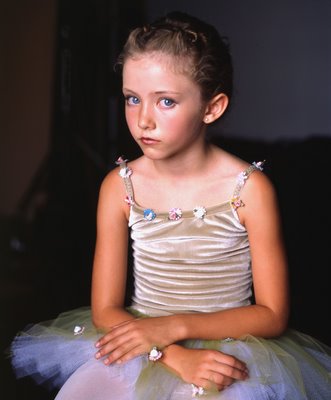  Rebecca Anne Stewart August, 2005 Isabella de' Medici Bronzino (Angelo Allori Di Cosimo) 1503-1572
|

































